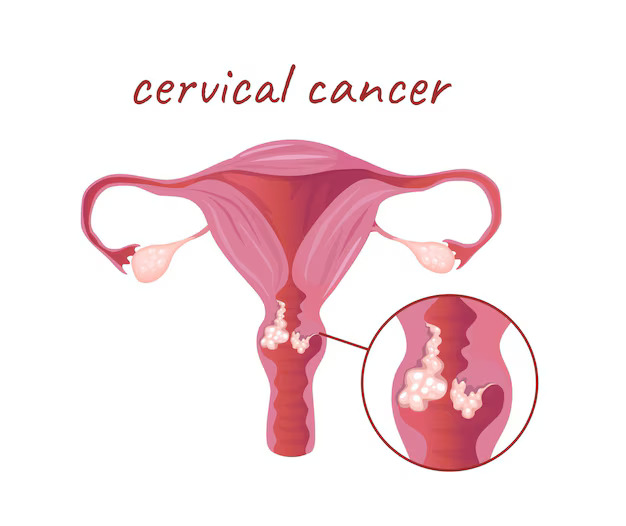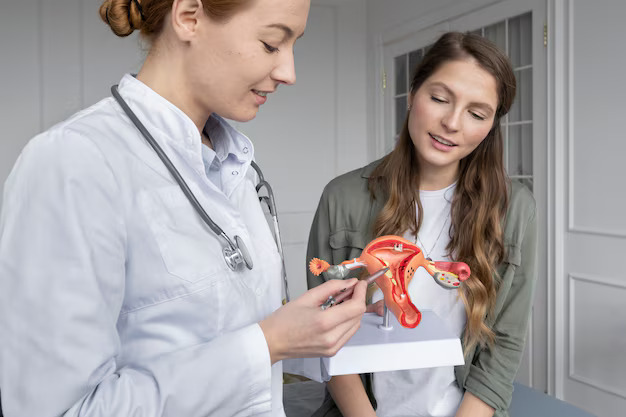8 Common Early Signs Of Cervical Cancer
Cervical cancer remains one of the most preventable yet potentially deadly forms of cancer affecting women worldwide. Thanks to routine screenings and the development of the HPV vaccine, mortality rates have decreased.
However, early detection still plays a critical role in improving survival rates and quality of life for those affected. One of the most important aspects of early detection is recognizing the early signs and symptoms of cervical cancer.
At www.sportandmedicalsciences.org, our mission is to raise awareness about health-related issues, offering reliable and engaging medical information. In this comprehensive guide, we will explore the 8 common early signs of cervical cancer to help you stay informed and proactive about your health.

1. Unusual Vaginal Bleeding
One of the earliest and most common symptoms of cervical cancer is abnormal vaginal bleeding. This might include:
- Bleeding between menstrual periods
- Bleeding after sexual intercourse
- Bleeding after menopause
- Heavier or longer menstrual periods
This symptom often occurs when the cancer spreads to nearby tissue. If you notice any irregularities in your menstrual cycle or unexpected bleeding, consult a healthcare provider immediately.
2. Unusual Vaginal Discharge
While vaginal discharge is a normal part of reproductive health, changes in color, consistency, or smell could be an early sign of cervical cancer. Warning signs include:
- Foul-smelling discharge
- Watery, pink, or brown discharge
- Discharge that occurs between periods or after menopause
This happens when cancerous cells irritate the cervical tissues, causing inflammation and increased secretions.
3. Pelvic Pain or Discomfort
Persistent pelvic pain, especially if it is not linked to the menstrual cycle, should not be ignored. Cervical cancer can cause:
- Dull aches or sharp pains
- Pressure in the pelvic region
- Pain during urination or sexual intercourse
This pain may signal that the cancer has spread to surrounding tissues or organs.
4. Pain During Sexual Intercourse (Dyspareunia)
Painful intercourse can result from several health issues, including infections and hormonal imbalances. However, when associated with cervical cancer, this symptom often occurs due to tumor growth or irritation of the cervix.
Women experiencing ongoing discomfort during intimacy should schedule a pelvic exam to rule out cervical abnormalities.
5. Unexplained Fatigue
Fatigue is often overlooked but can be a sign of many cancers, including cervical cancer. This type of fatigue is not relieved by rest and may be accompanied by:
- Weakness
- Dizziness
- Shortness of breath
Chronic blood loss due to abnormal bleeding may lead to anemia, further exacerbating fatigue.
6. Unintended Weight Loss
Losing weight without trying can be alarming. In the context of cervical cancer, weight loss may occur because the body is using more energy to fight the disease or due to loss of appetite.
If you notice significant weight loss without changes in diet or activity, consult your healthcare provider.
7. Leg Pain or Swelling
Advanced cervical cancer may block blood flow or press against pelvic lymph nodes, leading to:
- Swollen legs (typically one more than the other)
- Aching or painful legs
- A feeling of heaviness
This is usually a sign of cancer progression and should be addressed immediately.
8. Frequent or Painful Urination
When cervical cancer spreads, it may press against or invade the bladder. Symptoms may include:
- Burning sensation during urination
- Frequent urination
- Blood in the urine
These symptoms can also indicate a urinary tract infection (UTI), but if they persist or recur frequently, further evaluation is necessary.
Understanding Risk Factors
While recognizing early signs is vital, understanding what puts someone at greater risk for cervical cancer helps in prevention. Major risk factors include:
- Human papillomavirus (HPV) infection: The most significant risk factor.
- Smoking: Weakens the immune system, reducing the ability to fight HPV.
- Weakened immune system: Conditions like HIV can elevate risk.
- Multiple sexual partners: Increases the likelihood of HPV exposure.
- Long-term use of oral contraceptives: More than five years of use may increase risk.
Vaccination against HPV and regular screenings like Pap smears and HPV tests are key preventive measures.
When to See a Doctor
Early detection drastically improves the prognosis of cervical cancer. If you experience any of the symptoms discussed, don’t ignore them. Early-stage cervical cancer often presents with mild symptoms or none at all. Therefore, maintaining regular gynecological exams is essential.

If any of the following apply, schedule an appointment:
- Symptoms persist for more than a couple of weeks
- Discomfort worsens or interferes with daily life
- Over-the-counter treatments or lifestyle changes don’t help
Diagnostic Procedures
If a healthcare provider suspects cervical cancer, they may perform one or more of the following tests:
- Pap Smear: Detects precancerous changes in cervical cells.
- HPV Test: Identifies the presence of high-risk HPV strains.
- Colposcopy: Allows close examination of the cervix using a magnifying device.
- Biopsy: Confirms the presence of cancerous cells.
Depending on the results, further imaging like CT scans or MRIs may be used to determine the extent of the disease.
Treatment Options
Treatment depends on the stage of the cancer and overall health of the patient. Options include:
- Surgery: Removal of the tumor or, in some cases, the entire uterus (hysterectomy).
- Radiation therapy: Targets cancer cells with high-energy rays.
- Chemotherapy: Uses drugs to kill cancer cells.
- Targeted therapy or immunotherapy: Newer approaches that focus on specific aspects of cancer cell growth.
Early-stage cervical cancer has a much higher treatment success rate, reinforcing the importance of early detection.
Living with Cervical Cancer
A cervical cancer diagnosis can be overwhelming, but many women go on to live full, healthy lives after treatment. Support systems, including family, friends, and professional counselors, can help navigate emotional and physical challenges.
Survivors often need to attend follow-up visits regularly to monitor for recurrence and manage side effects. Lifestyle changes such as a healthy diet, quitting smoking, and regular exercise can aid in recovery and overall well-being.
Final Thoughts
Cervical cancer is a serious yet largely preventable disease. Recognizing early signs can make a life-saving difference. If you or someone you know experiences any of the eight symptoms discussed, don’t wait. Schedule a check-up and advocate for your health.
Remember: knowledge, prevention, and early detection are your best weapons against cervical cancer.
References
- American Cancer Society
https://www.cancer.org - World Health Organization (WHO)
https://www.who.int - National Cancer Institute
https://www.cancer.gov - Centers for Disease Control and Prevention (CDC)
https://www.cdc.gov - Mayo Clinic
https://www.mayoclinic.org